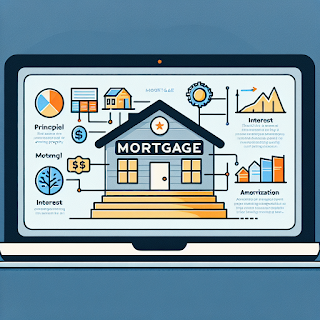What is a Mortgage?
When it comes to buying real estate, mortgages are the go-to financial tool. Interestingly, the term "mortgage" has its roots in Old French, translating to "death pledge." This rather grim name reflects the loan's journey from start to finish—either fully repaid or defaulted.
Mortgage Definition and Function
A mortgage is essentially a loan designed for purchasing or maintaining real estate, with the property itself acting as collateral. This setup allows both individuals and businesses to own property without shelling out the full price upfront. The borrower promises to pay back the lender over time, usually through regular payments that cover both the principal and the interest. Here are some key points about mortgages:
- Loan terms typically range from 15 to 30 years.
- Payments are fully amortized, meaning the payment amount stays the same, but the ratio of principal to interest shifts over time.
- If the borrower defaults, there's a risk of foreclosure.
- Mortgages can be obtained from a variety of sources like banks, credit unions, and specialized mortgage companies[1], [2].
Origin of 'Mortgage'
The term "mortgage" comes from Old French, mixing "mort" (death) and "gage" (pledge)[1], [2]. This "death pledge" idea mirrors the loan's life cycle; it "dies" when you either pay it off or default on it. While the term first appeared in the late 14th century, the idea of property-secured loans goes back over a thousand years. Early English documents from the 1100s outline lender protections in property transactions[1], [2]. Despite its ominous name, the mortgage has become a key financial tool, making homeownership and property investment accessible to millions.
Types of Mortgages
Mortgages come in all shapes and sizes to fit different needs and financial situations. Here's a quick rundown of the main types:
| Mortgage Type | Description |
|---|---|
| Fixed-Rate | Interest rate stays the same for the entire loan term, making your payments predictable[1]. |
| Adjustable-Rate (ARM) | Interest rate varies based on market conditions, potentially starting lower[1]. |
| Conventional | Not backed by the government, usually requiring higher credit scores and down payments[1]. |
| FHA | Government-insured loans with more lenient credit requirements and lower down payments[1]. |
| VA | Loans for eligible veterans and service members, often with no down payment needed[1]. |
| Jumbo | Loans exceeding standard limits, used for high-value properties[1]. |
| Interest-Only | Allows you to pay only the interest for a set period, followed by principal and interest payments[1]. |
Each type has its own perks and potential downsides, so it's crucial to think about your long-term goals, financial stability, and how much risk you're willing to take when choosing a mortgage.
Historical Evolution of Mortgages
Back in the early 20th century, mortgages were a whole different animal. They often required 50% down payments and had short-term, interest-only loans that ended with a big balloon payment[1]. The Great Depression changed all that, leading to the creation of the Federal Housing Administration (FHA) in the U.S. This was a game-changer, introducing:
- Lower down payment requirements
- Longer loan terms from 15 to 30 years
- Amortization, allowing you to pay off both interest and principal simultaneously
- Strict quality standards for properties
- Fairer lending practices, regardless of your background
These reforms shaped the modern mortgage system, making homeownership more attainable for a wider range of people and transforming the American real estate market[1].
Understanding Mortgage Amortization
Mortgage amortization is all about gradually paying off your loan through regular installments over a set period, usually 15 to 30 years[1]. In an amortized mortgage, each monthly payment includes both principal and interest, with the ratio changing over time. At the beginning, a larger chunk of the payment goes toward interest, but as time goes by, more is applied to the principal[1]. This setup ensures steady monthly payments while gradually reducing the loan balance. An amortization schedule helps you see exactly how much of each payment goes to principal and interest throughout the loan term, letting you track your progress in building home equity[1].
Principal vs. Interest Payments
When it comes to mortgage payments, principal and interest are the main components. The principal is the original amount borrowed, while the interest is the cost of borrowing that amount. Each mortgage payment chips away at both the principal and the interest charged by the lender[1], [2]. At first, a larger portion of each payment goes toward interest, but over time, more of it goes to paying down the principal. This process, known as amortization, lets you gradually build equity in your home while keeping monthly payments consistent[1].
Wrapping Up Mortgages
From their rather ominous "death pledge" origins, mortgages have evolved into vital financial instruments that make property ownership and investment possible for many. Nowadays, there are various types of mortgages to suit different financial situations, including fixed-rate, adjustable-rate, government-backed, and conventional options[1], [2]. The modern mortgage system, shaped by reforms post-Great Depression, has made homeownership more accessible with features like lower down payments, longer loan terms, and amortization. Understanding important concepts like amortization schedules and the balance between principal and interest payments is key for borrowers to make smart decisions and manage their home loans effectively[1]. As mortgages continue to play a crucial role in the real estate market, we can expect their structure and regulations to keep evolving to fit changing economic conditions and borrower needs[1].

Comments
Post a Comment